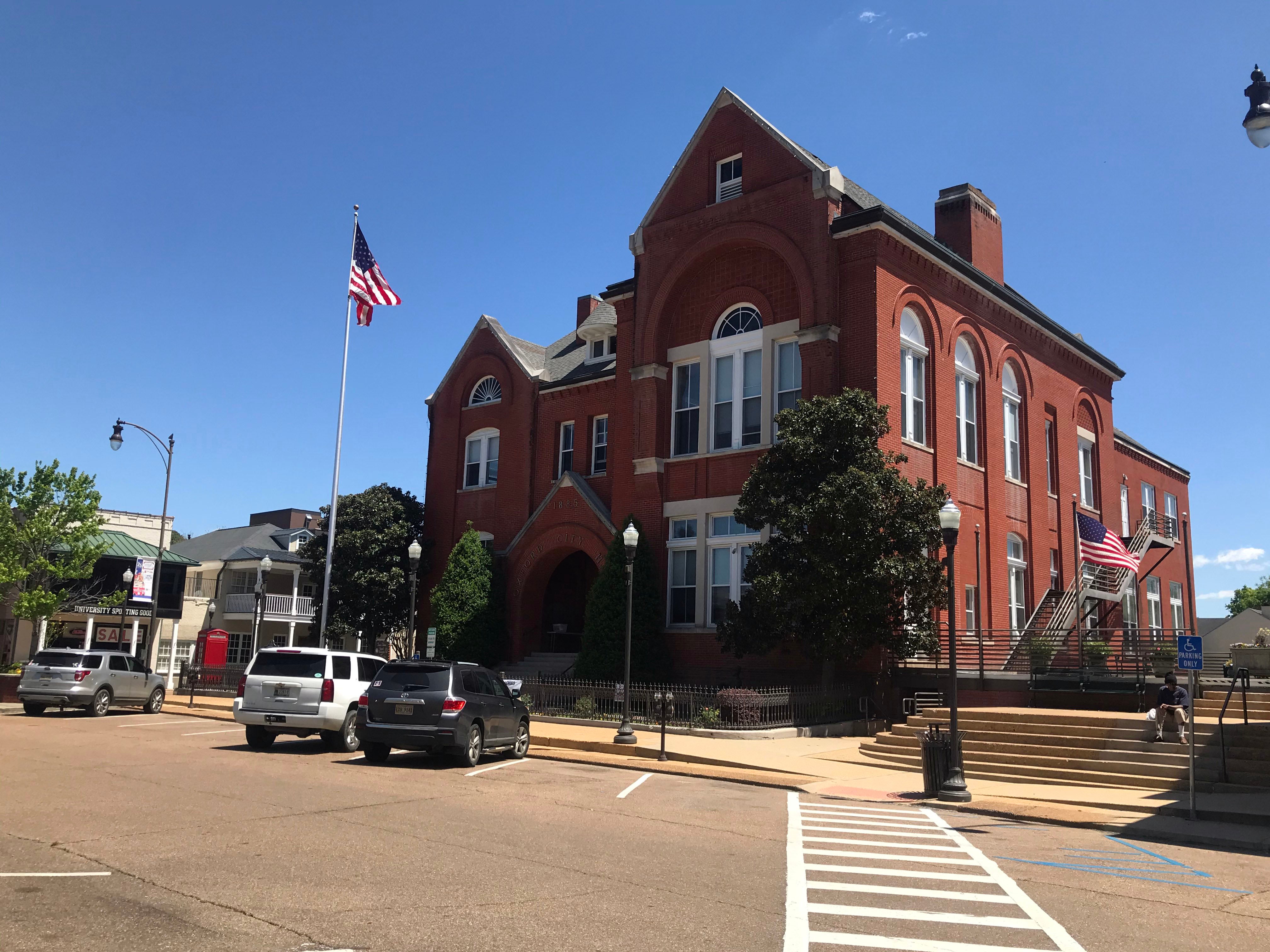Aldermen vote to reopen select businesses as part of Phase 1 in Oxford’s recovery plan
Published 3:48 pm Tuesday, April 28, 2020

- Oxford City Hall on Friday, June 12, 2020. (Jake Thompson/Oxford Eagle)
The light at the end of the tunnel for returning to some normalcy is getting closer and brighter for Oxford.
During a special meeting called on Tuesday, the Board of Aldermen voted to begin reopening the city on April 29 by implementing Phase 1 of the “Serving Oxford Safely” recovery plan. A fifth COVID-19 emergency resolution passed by a vote of 6-1, with Alderwoman Janice Antonow as the lone dissenting vote.
Under Phase 1 of the city’s recovery plan, all retail, office and general business, childcare services, medical and health services and pharmacies are allowed to reopen by following the guidelines in the recovery plan. All other businesses must remain closed, either because they are not included in Phase 1 or because they are included in Governor Tate Reeves’ latest executive order, which went into effect on April 27 and expires on May 11.
Beginning at 8 a.m. on April 29, select businesses will be allowed to open, but must follow mask and facial covering requirements as well as the social distancing guidelines that were passed in the City’s fourth resolution regarding essential businesses. Retail stores must limit guests to only 30 percent of their normal capacity or five customers for every 1,000 square feet.
Restaurants will continue to keep their dining rooms closed, as per Reeves’ “Safer at Home” order and offer drive-thru, delivery and curbside service.
Other businesses that are not allowed to be open include: barbershops; hair, nail and tanning salons; exercise and training facilities and entertainment venues. Organized team sports and outdoor recreation are also not allowed to resume under the current order.
During the meeting, Mayor Robyn Tannehill addressed comments regarding the City’s goal of being fully reopened by Aug. 1.
“Understand that for small businesses in our community, opening as soon as possible is critical, but the most critical thing is for us to have a successful fall season,” Tannehill said. “So, we have to do these baby steps in order to protect that. Know that when we say that’s the light at the end of the tunnel, that’s not because we’re just dying to get the students back and the bars open. That’s because we know that for the backbone of our community, for the rental properties, for the shops, for the grocery stores, for everyone here that’s counting on 20,000 extra people in our population, it is critical that we be ready to go in the fall.”
The decision to begin reopening Oxford this week was due to new COVID-19 data the Board received from the city’s emergency management director, Jimmy Allgood. According to the data shown, Lafayette County’s peak of COVID-19 cases was on April 18.
At the beginning of the meeting, Allgood showed charts tracing Lafayette County’s COVID-19 cases. As of April 27, there were 20 active cases in Lafayette County based on the City’s roll-off process. The process involved removing cases 15 days after being reported, due to the suggested lifespan of the virus in a person or due to someone dying from COVID-19 complications.
Cases reported at long-term care facilities were not included in the active case number, due to those cases being confined to the LTC facility. Employees of LTC facilites who tested postive were included in the community number of cases, due to them leaving the facility once they get off work and traveling throughout Oxford and Lafayette County.
The City will continue to update its data every day at 4 p.m. on its website, according to Tannehill.
During last week’s special meeting on April 23, the Board moved to implement Phase 1 of their recovery plan 14 days after the peak was established, whenever that may be. Two weeks after the April 18 peak would be May 2, but the Board voted to go ahead and allow businesses to reopen on April 29.
Antonow said she was in favor of waiting until the full 14-day period was over, citing the potential of causing another spike in cases.
“My big fear is that, I don’t know that two or three or four days is going to make make much difference – I hope it doesn’t – but we don’t know,” Antonow said. “I worry that we’re going to open, then we’re going to have a spike in cases and we’re going to have to shut down again. To me, that would be the worst thing for a small business. To get their employees off unemployment and back in the swing of things and we have to close them down again. I would really like the extra buffer.”
To view the new resolution, click here, and to view the full “Serving Oxford Safely” recovery plan, click here.





